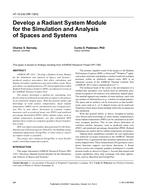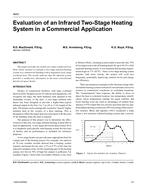A novel bivalent heating appliance was installed in a Toronto-area home and monitored for the 85/86 and 86/87 heating seasons. This unit is an air-source split-system heat pump, which incorporates its own auxiliary heat source in the form of a gas burner located beneath the outdoor coil of the unit. At warmer temperatures, the machine runs as a normal air-source heat pump, but at colder temperatures, the gas burner is activated for “second-stage” heating and defrosting. During this unusual gas burning operation, flue gases are condensed on the outdoor heat exchanger to achieve combustion efficiencies similar to those of a condensing gas furnace.
Two units with different capacities have been monitored for the two respective years using the “Alternate Time Period Technique”. This technique compares two heating devices in the same home by operating the two units alternately. This installation compares the bivalent heat pump to an electric resistance furnace. Data collected include consumptions and run times in both gas- and air-source modes. Consumption data are regressed against average outdoor temperature to give a heating system load line for the house during operation of the electric furnace and gas and electric demands (versus temperature) for the heat pumpts operation. A comparison between these two sets of data yields the operational efficiency of the heat pump versus outdoor temperature. A bin-method summation using the two curves can yield heating seasonal efficiency information for various climatic regions.
Units: SI
Citation: Symposium, ASHRAE Transactions, 1988, vol. 94, pt. 1, Dallas, TX
Product Details
- Published:
- 1988
- Number of Pages:
- 10
- File Size:
- 1 file , 910 KB
- Product Code(s):
- D-DA-88-06-2


